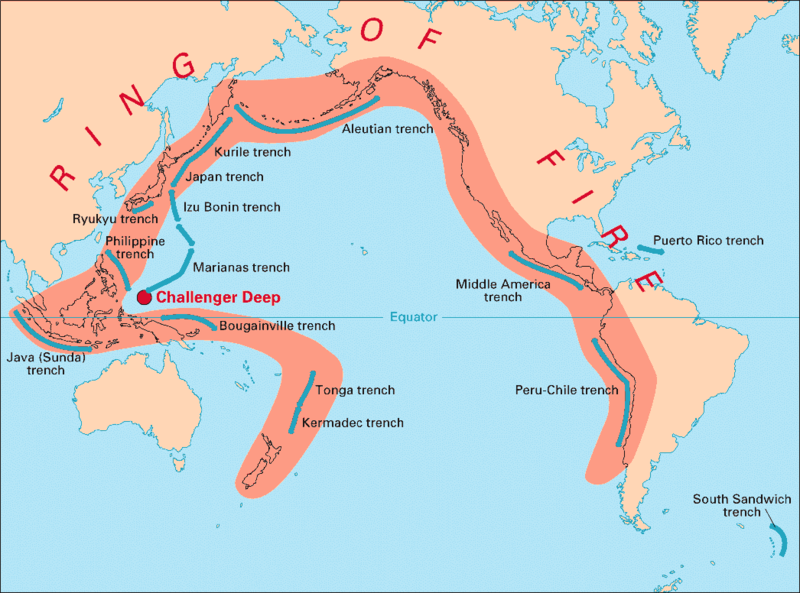Mount Everest, Kanchenjnngs, and others mountains formed at convergent plate boundaries. A convergent boundary, also known as a convergent plate boundary or a destructive plate boundary, is an actively deforming region where two (or more) tectonic plates or fragments of lithosphere move toward one another and collide.

When two plates move toward one another, they form either a subduction zone or a continental collision. It depends on the nature of the plates involved. In a subduction zone, the subducting plate, a plate with oceanic crust, moves beneath the other plate, which can be made of either oceanic or continental crust. During collisions between two continental plates, large mountain ranges, such as the Himalayas are formed. A transform fault is a fault which runs along the boundary of a tectonic plate. The relative motion of such plates is horizontal in either sinistral or dextral direction. Most transform faults are found on the ocean floor, where they often offset active spreading ridges to form a zigzag plate boundary. The most well known transform faults are found on land. The San Andreas fault in California is a major transform fault. http://en.wikipedia.org/wiki/Transform_boundary
Plate tectonics are what form mostly everything as in hills, mountains, ridges, etc. in this world. It all works with however the plates decide to move.
There are also three types of volcanoes: Shield, stratovolcano, and cinder cones. A cinder cone is a steep conical hill of volcanic fragments that accumulate around and downwind from a volcanic vent. The rock fragments are glassy and contain numerous gas bubbles "frozen" into place as magma exploded into the air and then cooled quickly. Cinder cones range in size from tens to hundreds of meters tall. Cinder cones are made of pyroclastic material. A shield volcano is a large volcano with shallow-sloping sides. Shield volcanoes are formed by lava flows of low viscosity. Many of the largest volcanoes on Earth are shield volcanoes. The largest in terms of area covered is Mauna Loa of Hawaii; the tallest measured from its base under the ocean, however, is Mauna Kea of Hawaii. A stratovolcano, also called a composite volcano, is a tall, conical volcano composed of many layers of hardened lava, tephra, and volcanic ash. These kinds of volcanoes are characterized by a steep profile and periodic, explosive eruptions. The lava that flows from them is viscous, and cools and hardens before spreading very far. The source magma of this rock is classified as acidic.
The Pacific Ring of Fire is an area of frequent earthquakes and volcanic eruptions encircling the basin of the Pacific Ocean. Ninety percent of the world's earthquakes and 80% of the world's largest earthquakes occur along the Ring of Fire. The Ring of Fire is a direct result and consequence of plate tectonics and the movement and collisions of crustal plates. http://en.wikipedia.org/wiki/Pacific_Ring_of_Fire
There really is no use for this info in the future unless you become some type of scientist. But it will allow you to klnow more about where certain thing
 s in this world came from. There really isnt a core democratic value to go with this either.
s in this world came from. There really isnt a core democratic value to go with this either.



